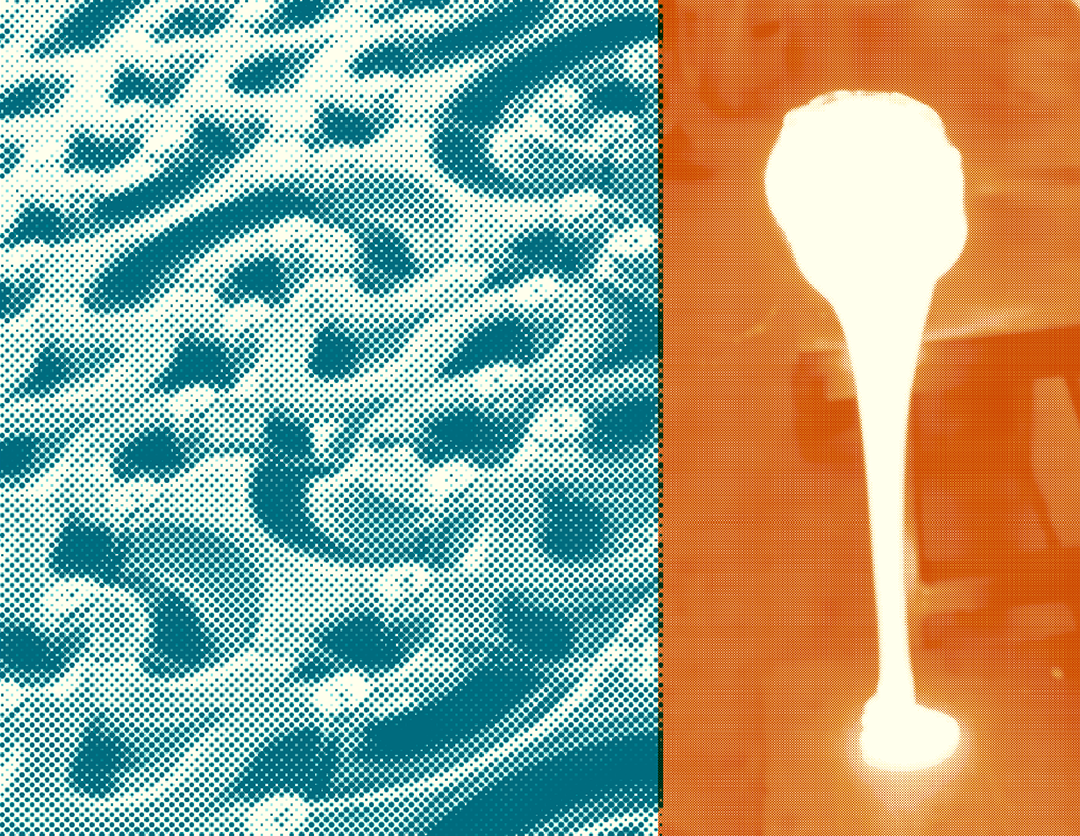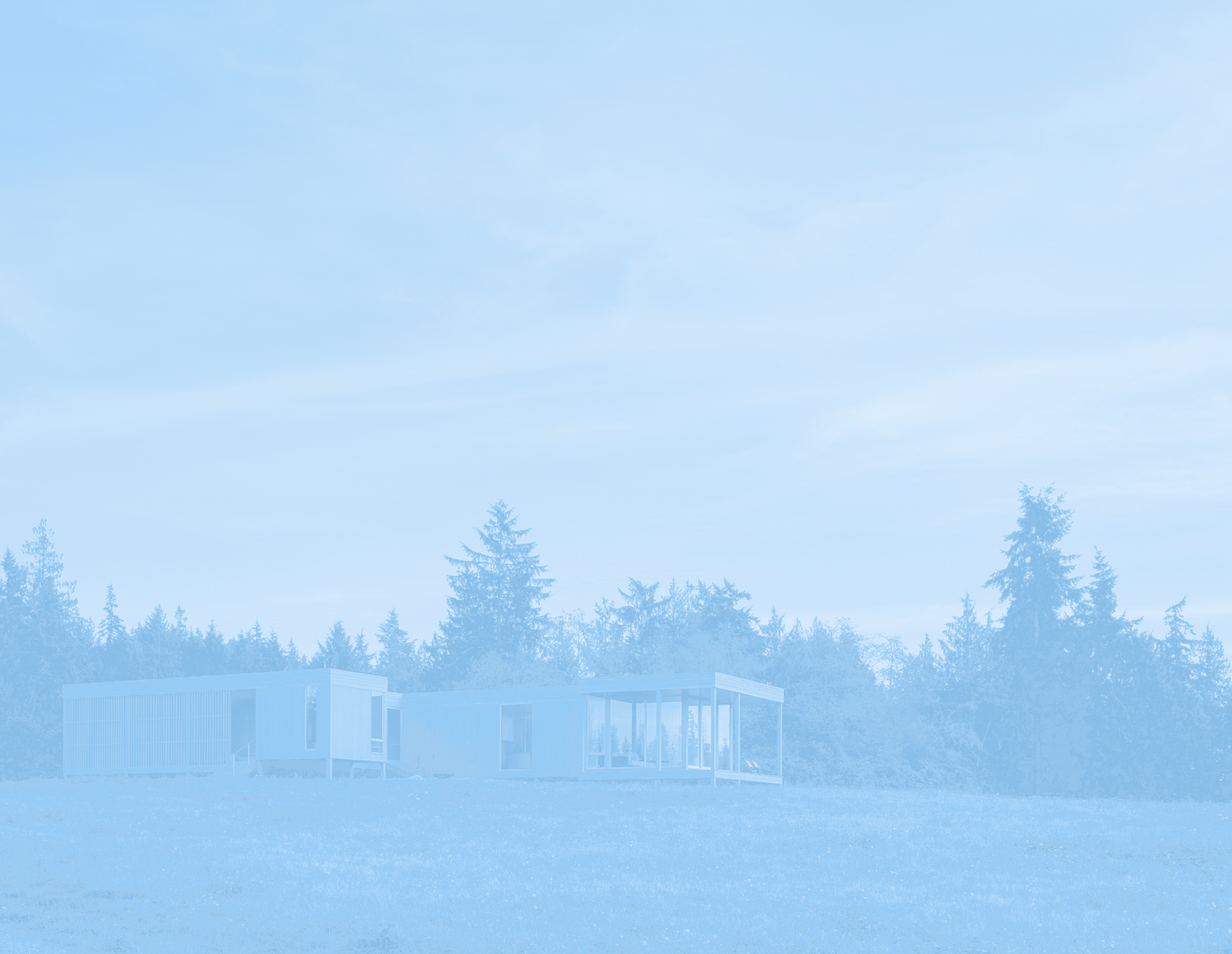.jpg)
In the parking garage of Seattle-Tacoma International Airport, people with roller boards stream by the subject of my attention as if it were invisible: a set of steel bollards, around four feet in height. I had, of course, seen these bollards countless times, the same way most Seattleites with air travel plans do: unremarkably. In a rush. As visual background noise when I crossed the threshold between the garage and skybridge. I might have used them to set down my phone while I extracted my parking ticket. So is the utilitarian life of the short, thick posts, whose primary purpose is traffic deference and pedestrian protection.
Tommy Gregory, the Port of Seattle’s senior art program manager and curator, who was leading me on a tour of the airport’s collection, saw a different future for the bollards of Sea-Tac. Briskly walking to the center of the skybridge, he pointed to the departures traffic zone below. “There are over 400 bollards down there,” he said, his implication clear: there was so much room for art. He explained how, not long after he began in his role in 2018, he saw the potential for art in these structures. At the time, however, not everyone at the Port was ready for the idea. The people he needed to convince to see the industrial structures as something more than safety features—including architecture, facilities, and infrastructure teams—reflect the collaborative nature of most projects at the airport. It also spoke to the grand vision Gregory has for Sea-Tac Airport, to make it a “true public art environment” and the mind-changing that such an ambition requires.
Progress on the bollard installations began modestly, with the two projects that opened at the skybridges in late 2024. “Look at those funny lipsticks inviting you to the airport,” KT Hancock described in a video about A Color for Every Destination, her artwork for the commission. Working with their cylindrical shape, the Burien artist topped six of the posts with steel tips she fabricated and painted in thick, ROYGBIV hues. Positioned in rainbow-order, her work borders the entrance to Skybridge 1 at the south end of the parking garage. “Yes, steel is rugged, and yes, it is strong. And yes, it is lipstick,” Hancock said, pointing to the masculine and feminine associations her work brings together—an unexpected gesture, in the same spirit as the artwork’s location.
Gregory pointed out the piece’s connection to that of Claus Oldenburg, the Pop artist famous for the monumental sculptures of ordinary objects he created in the late twentieth century with his wife Coosje van Bruggen. Hancock’s A Color for Every Destination most overtly recalls Oldenburg’s first public work, the 24-foot-tall Lipstick (Ascending) on Caterpillar Tracks (1969). Created in collaboration with architecture students, the artist placed it, without permission, in Beinecke Plaza of the Yale University campus, amidst protests of the Vietnam War. Oldenburg’s work paired a phallic-like lipstick tube with the masculine tank tracks that form the sculpture’s base. The work became a gathering point for the anti-war protests, supporting Oldenburg’s statement that he wanted art “that does something other than sit on its ass in a museum.”
Airport art, too, does something other than “sit on its ass in a museum,” in the sense that it intersects with the public’s lives, whether they would like it to or not. At the time of Lipstick (Ascending)…, the notion that art that should be part of American daily life followed prevailing attitudes of the time. The government largely supported the idea that art should belong to the public and should exist in public spaces. In 1972, the U.S. General Services Administration instituted the Art in Architecture program, which includes the percent-for-art policy that requires one-half of one percent of estimated construction costs be used for art commissions. This policy served as a model for many state and municipal community art programs in the following years. Seattle became an early adopter of the program in 1973, and the Port of Seattle reaffirmed its commitment to the funding approach in 2019. Now grown to 300 objects, the Sea-Tac Collection, unlike a museum’s, is almost entirely on view at all times.
While finding art in airports has become more commonplace since the ‘70s, the idea of an airport as an intentional, independent art space (separate from temporary exhibitions or objects loaned by museums) remains largely unexpected. A sense of rugged, can-do ambition came through the anecdotes Gregory told about his work, as if each project required forging new territory—or, staying at the airport until two in the morning, as he recently did to install a mosaic. He and his small team of five work with other Port staff to handle most (if not all) of the installation and construction processes. But, beyond the physical labor, the greater task may still be the mental shapeshifting needed to convince the public to see an airport as their public art space. Gregory relayed stories of connecting with architects to arrange better lighting for a wall of two-dimensional art, and explaining to airlines how a work of art could, in fact, benefit their check-in space. While heartening to hear of the successes of his negotiations, the level of convincing required suggested that even for one of the longest running, consistently funded airport art programs in the country, enthusiasm has yet to fully catch on.
But perhaps instances of pushback are signs of success; when art gets outside of a typical art space and into real lives, it creates tension. Much akin to Oldenburg’s philosophy, a number of the Port’s recent projects were sited in places that, like the bollards, pushed art beyond walls and vitrines. Inside the Interfaith Prayer and Meditation room hangs Tacoma artist Weston Lambert’s Currents (2020), a glass work inspired by the patterns of brain waves during meditation. Paintings and works on paper by LGBTQ+ artists line a wall outside of gender-neutral restrooms. A recent call invited commissions related to motherhood, which will be displayed in lactation suites. While travelers and airport workers may still only encounter these artworks briefly, they may also find more meaningful connections that speak directly to particular spaces and the experiences that happen within them.
The other bollard commission that opened in the parking garage last year aligns more with what many expect of airport art, its subject bearing relation to wilderness experiences that fuel much of Seattle’s tourist industry. Created by Kyle Olson and Sandra Williams, The Origin of Fire features small sculptures of Mount Rainier on top of the posts, with renderings of trails and native species etched around the sides. However, the mind-changing related to this project is less about the specific artwork and has more to do with the bollards themselves. Gregory explained how the uniform shape, material and dimensions of the posts make them a streamlined, relatively inexpensive site for art commissions. Once the relevant staff at the Port became attuned to the comparative ease of their creation and saw the results with the first two installations, they started to come around. Some even started asking when the Port could start doing more bollard projects, as if Gregory’s original vision, from five years earlier, had become a natural next step.
When I asked Gregory if he was considering other projects for outdoors, he said some were already in progress, aiming to be ready when travelers arrive in Seattle for the FIFA World Cup in 2026. As the city takes the international stage during the event, it will also be a chance for Sea-Tac Airport to showcase the impact art in public spaces can make. At the time of this article’s writing, the fate of the federal government’s Art in Architecture program—and its 26,000 artworks spread across federal buildings—had become in peril, after the Trump administration announced plans to fire more than half of the staff overseeing the collection. There perhaps was never a more urgent time to follow Gregory’s expansive vision for art in public spaces—and to see art’s power, when it is embedded within the lives of the citizens to whom it belongs.










.jpg)

.jpg)